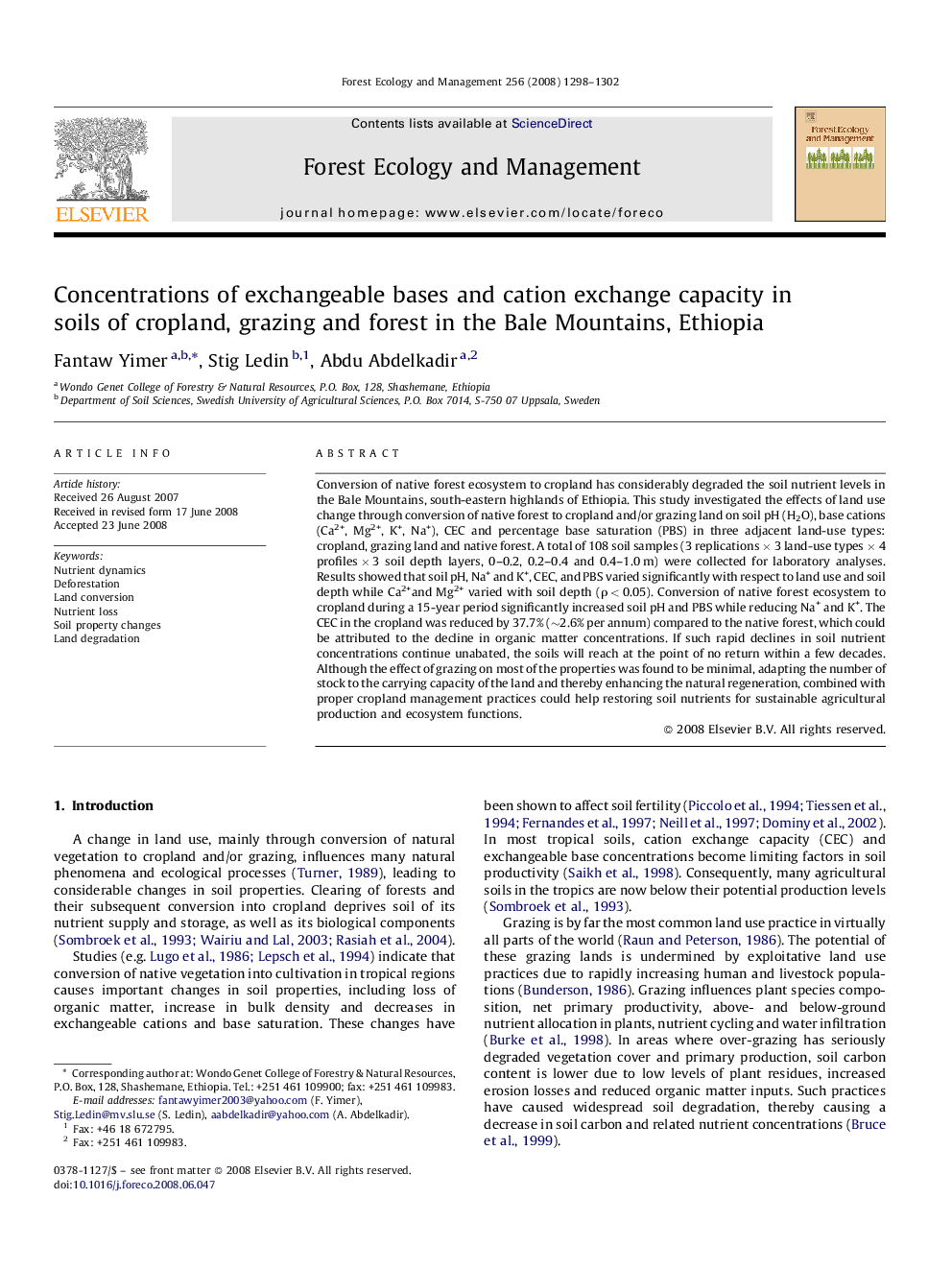| Article ID | Journal | Published Year | Pages | File Type |
|---|---|---|---|---|
| 89541 | Forest Ecology and Management | 2008 | 5 Pages |
Conversion of native forest ecosystem to cropland has considerably degraded the soil nutrient levels in the Bale Mountains, south-eastern highlands of Ethiopia. This study investigated the effects of land use change through conversion of native forest to cropland and/or grazing land on soil pH (H2O), base cations (Ca2+, Mg2+, K+, Na+), CEC and percentage base saturation (PBS) in three adjacent land-use types: cropland, grazing land and native forest. A total of 108 soil samples (3 replications × 3 land-use types × 4 profiles × 3 soil depth layers, 0–0.2, 0.2–0.4 and 0.4–1.0 m) were collected for laboratory analyses. Results showed that soil pH, Na+ and K+, CEC, and PBS varied significantly with respect to land use and soil depth while Ca2+and Mg2+ varied with soil depth (ρ < 0.05). Conversion of native forest ecosystem to cropland during a 15-year period significantly increased soil pH and PBS while reducing Na+ and K+. The CEC in the cropland was reduced by 37.7% (∼2.6% per annum) compared to the native forest, which could be attributed to the decline in organic matter concentrations. If such rapid declines in soil nutrient concentrations continue unabated, the soils will reach at the point of no return within a few decades. Although the effect of grazing on most of the properties was found to be minimal, adapting the number of stock to the carrying capacity of the land and thereby enhancing the natural regeneration, combined with proper cropland management practices could help restoring soil nutrients for sustainable agricultural production and ecosystem functions.
